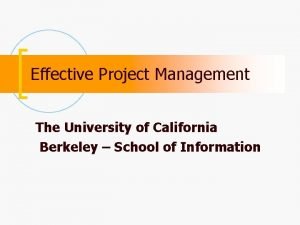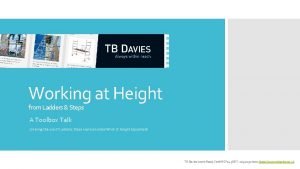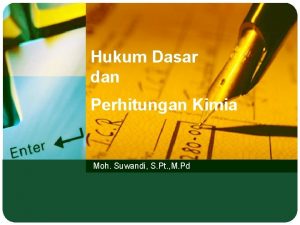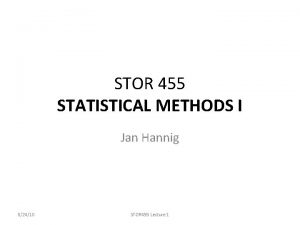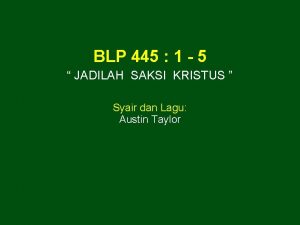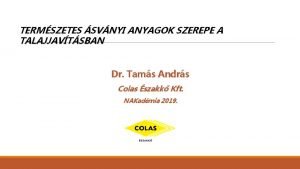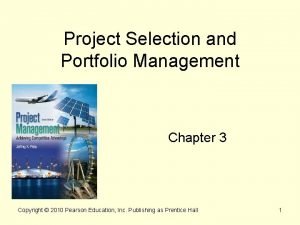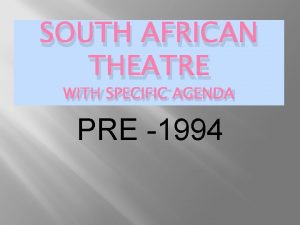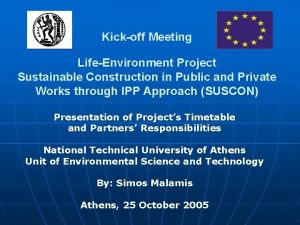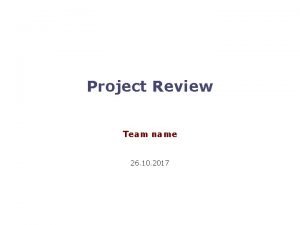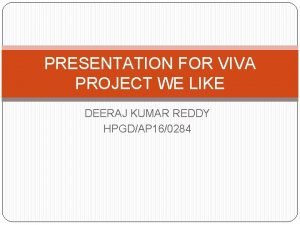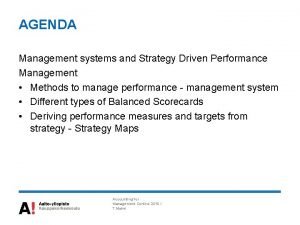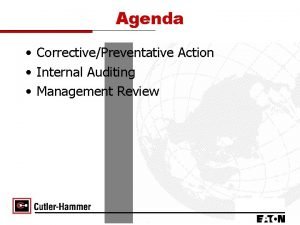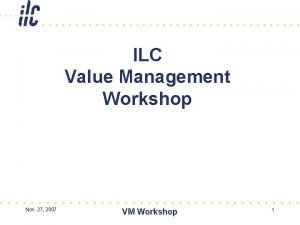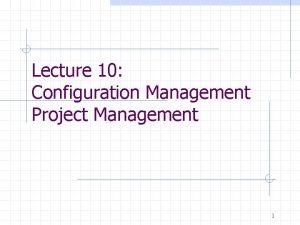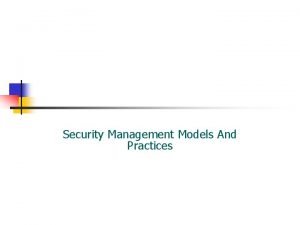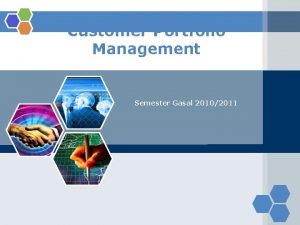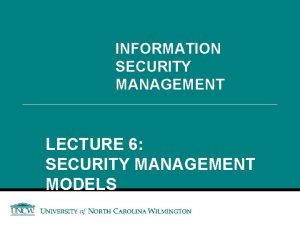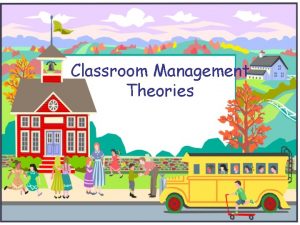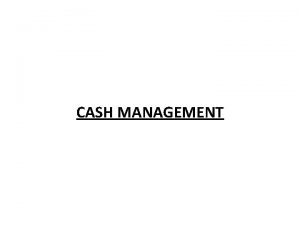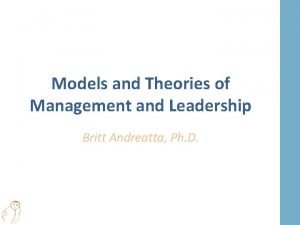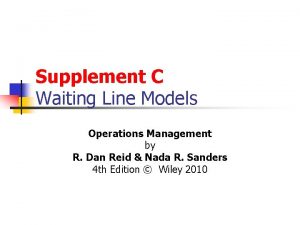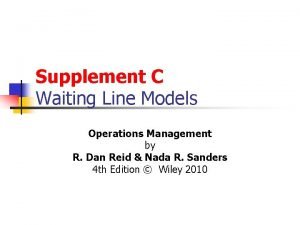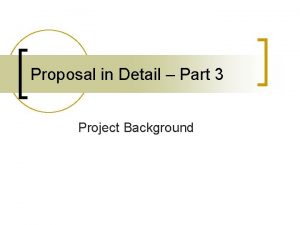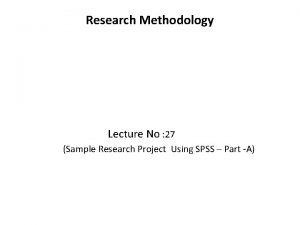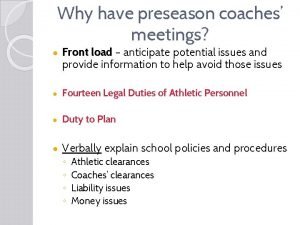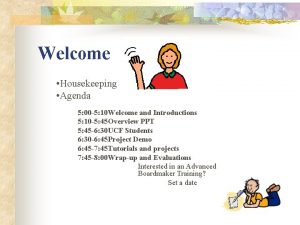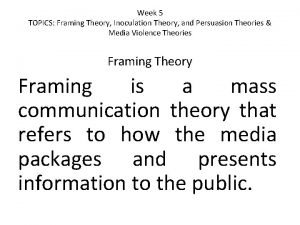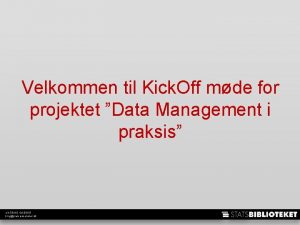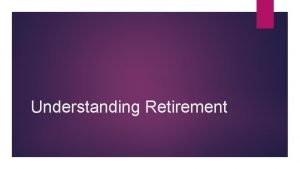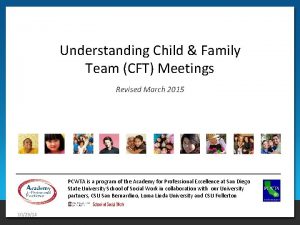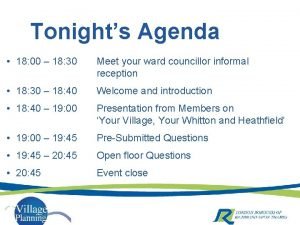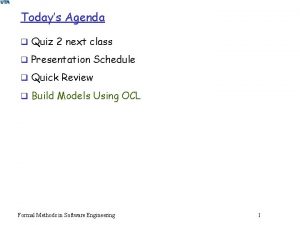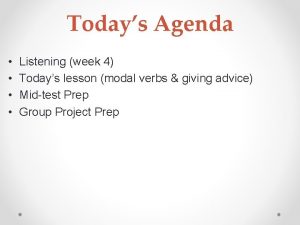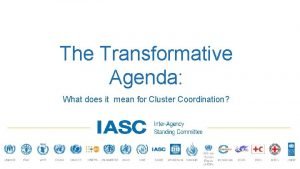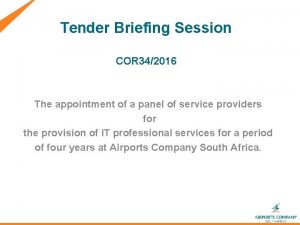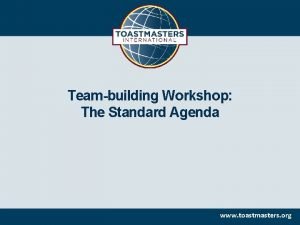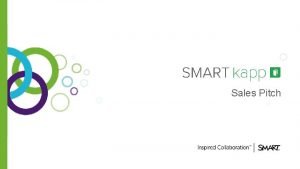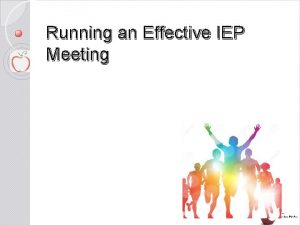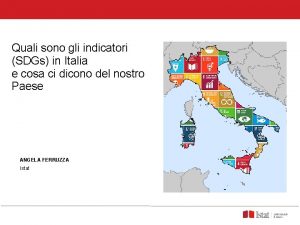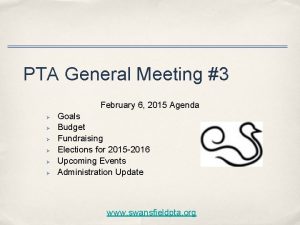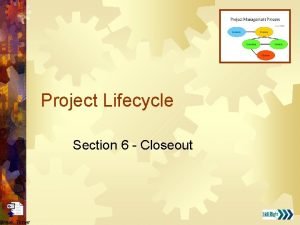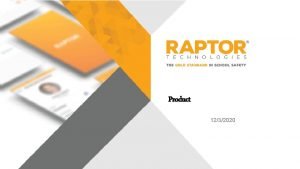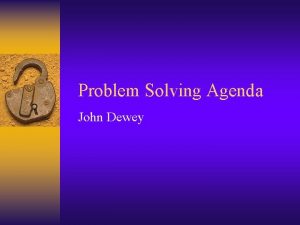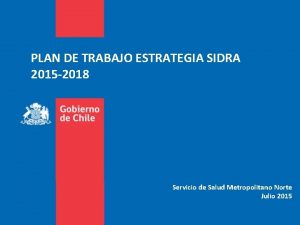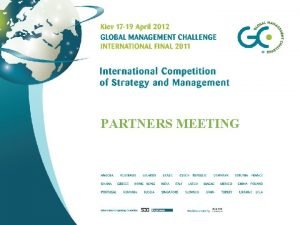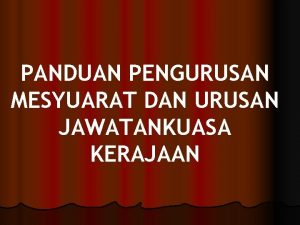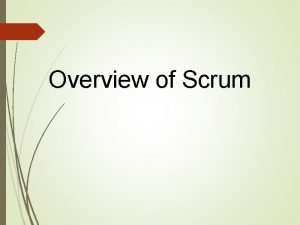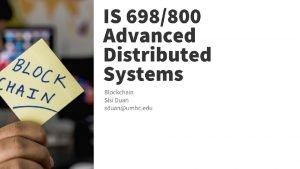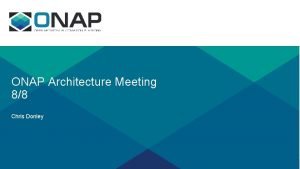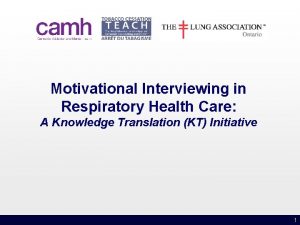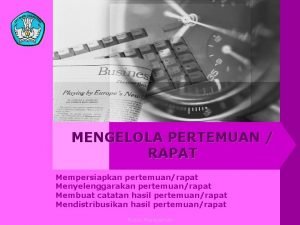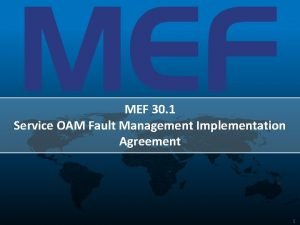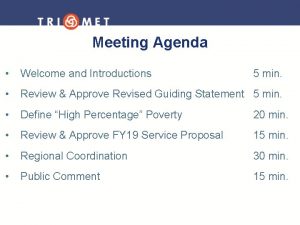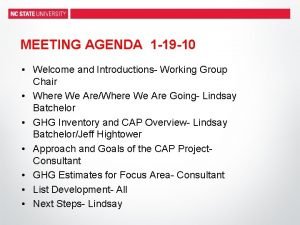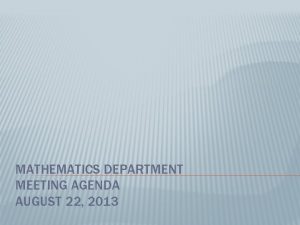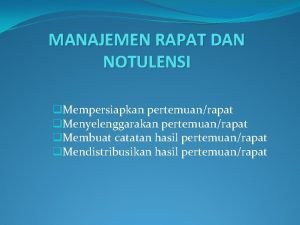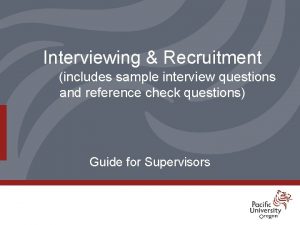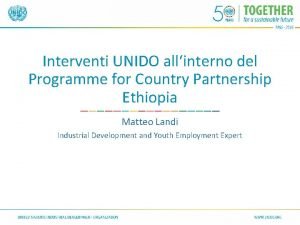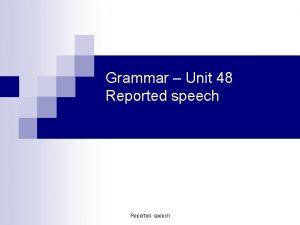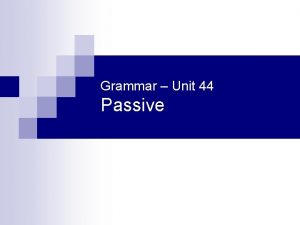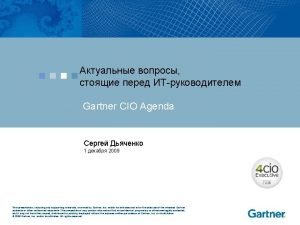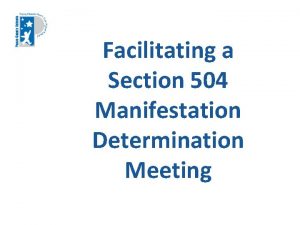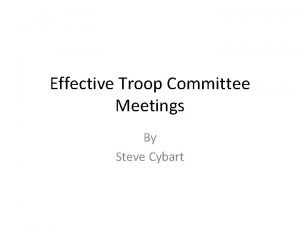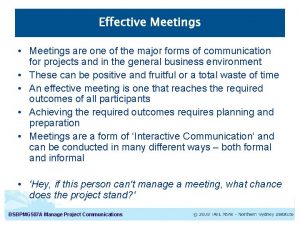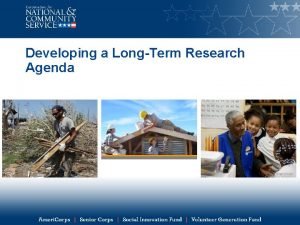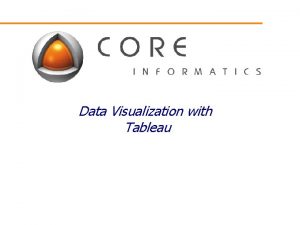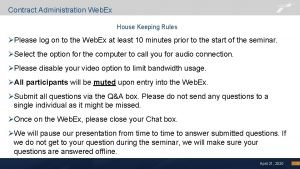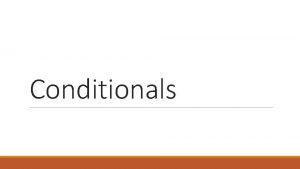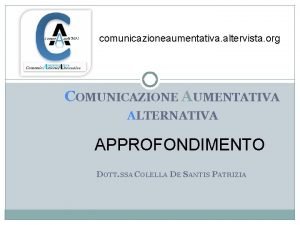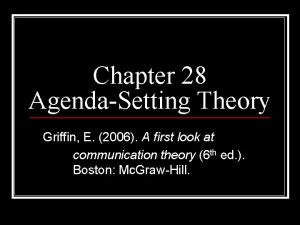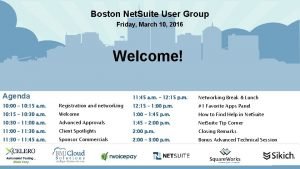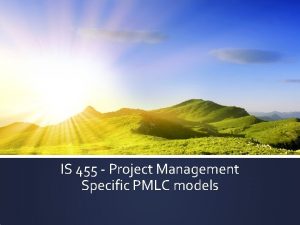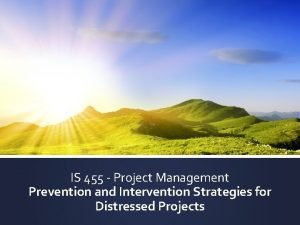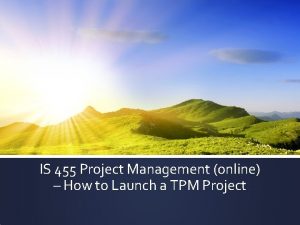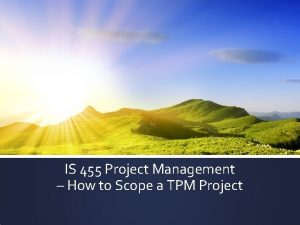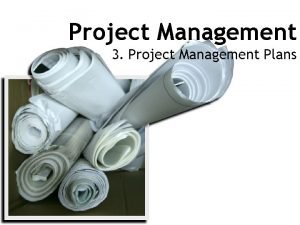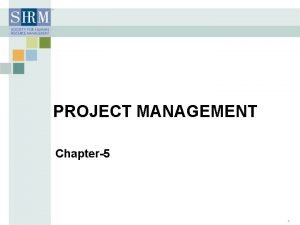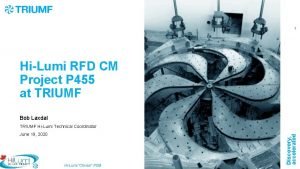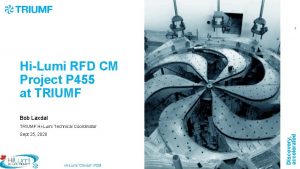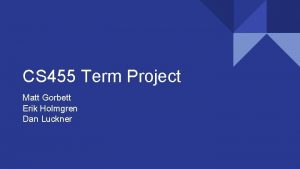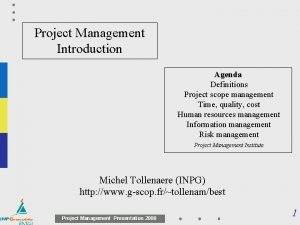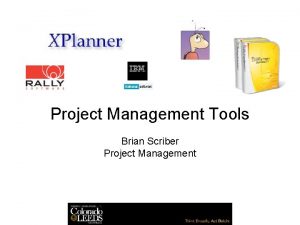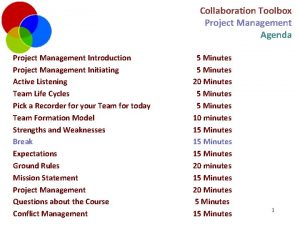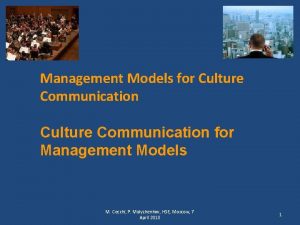IS 455 Project Management Specific PMLC models Agenda






















































































































- Slides: 118

IS 455 - Project Management Specific PMLC models

Agenda Tuesday – Team Time/Mentor meeting Thursday. Announcement(s) Class Evaluation House Cleaning Simulation Due(Today) Myers-Briggs Test Specific PMLC models COPYRIGHT TOM SULZER © 2019

COPYRIGHT TOM SULZER © 2019

House Cleaning • Course Evaluation, Thursday Introduction • Simulation Report is due Thursday, May 9 th. (See resource page for directions on how to combine pdfs to create a single word document. ) • Communications Analysis Paper Tuesday, May 14! • Final opens May 16 th @5: 00 pm and closes May 23 rd @5: 00 pm. COPYRIGHT TOM SULZER © 2019

Effective Project Management: Traditional, Agile, Extreme Managing Complexity in the Face of Uncertainty Ch 12: Specific PMLC Models Presented by Tom Sulzer Copyright Tom Sulzer © 2019

Ch 12: Specific PMLC Models Summary of Chapter 12 Ø Traditional Project Management Ø Ø Ø Agile Project Management Ø Ø Ø Iterative PMLC Models Adaptive PMLC Models Extreme Project Management Ø Ø Linear PMLC Models Incremental PMLC Models Extreme PMLC Model Challenges to Project Set-Up and Execution Copyright Tom Sulzer © 2019

Ch 12: Specific PMLC Models What Is Traditional Project Management (TPM)? Traditional Project Management is a set of tools, templates, and processes for managing projects whose goal and solution are both clearly understood. NOTE: There are two types of TPM Models: Ø Linear Ø Incremental Copyright Tom Sulzer © 2019

From Ch 02: What Is Project Management? Introducing Project Management Life Cycles (PMLC) SOLUTION Clear Not Clear MPx Extreme Not Clear x. PM Extreme GOAL Clear TPM Linear Incremental APM Iterative Adaptive Copyright Tom Sulzer © 2019

Ch 12: Specific PMLC Models Linear Project Management Life Cycle (PMLC) Model Definition Ø Ø A Linear PMLC model consists of a number of dependent phases that are executed in a sequential order with no feedback loops. The complete solution is not released until the final phase. Linear Figure 12 -01 Copyright Tom Sulzer © 2019

Ch 12: Specific PMLC Models Linear PMLC Model Characteristics Ø Ø Complete and clearly defined goal, solution, requirements, functions, and features Few expected scope change requests Routine and repetitive activities Use established templates Copyright Tom Sulzer © 2019 Linear

Ch 12: Specific PMLC Models Linear PMLC Model Routine and Repetitive Activities Ø Ø Build and use a library of templates Keep and post the history of lessons learned Keep a history of estimated and actual task durations Keep a history of risks, your mitigation plans, and the results Templates Ø Ø Increases standard practices Provides learning modules for new project managers Establishes an archive of project artifacts Provides input for process and practice improvement programs Copyright Tom Sulzer © 2019

Ch 12: Specific PMLC Models Linear PMLC Model Strengths Ø Ø Entire project is scheduled up front Resource requirements are known Does not require the most skilled resources Team members do not have to be co-located Copyright Tom Sulzer © 2019 Linear

Ch 12: Specific PMLC Models Linear PMLC Model Weaknesses Ø Ø Ø Does not accommodate change very well Costs too much Takes too long before any deliverables are produced Requires complete and detailed plans Must follow a rigid sequence of processes Is not focused on client value Copyright Tom Sulzer © 2019 Linear

Ch 12: Specific PMLC Models Linear PMLC Model When to Use a Linear Approach Ø Ø Ø Projects that are repetitive Simple, short duration projects Projects contained totally within a single department and use no outside resources Copyright Tom Sulzer © 2019 Linear

Ch 12: Specific PMLC Models Specific Linear PMLC Models Ø Ø Standard Waterfall Model Rapid Development Waterfall Model Copyright Tom Sulzer © 2019 Linear

Ch 12: Specific PMLC Models Variations to the Linear PMLC Model Ø Standard Waterfall Model Linear Figure 12 -02 Copyright Tom Sulzer © 2019

Ch 12: Specific PMLC Models Variations to the Linear PMLC Model Ø Rapid Development Waterfall Model Linear Figure 12 -03 Copyright Tom Sulzer © 2019

Ch 12: Specific PMLC Models Linear PMLC Model Considerations in Choosing a Variation Ø Ø Ø Decomposing the project into parallel and independent swim lanes Swim lane cohesiveness Increased risk Copyright Tom Sulzer © 2019 Linear

Ch 12: Specific PMLC Models Linear PMLC Model Adapting & Integrating the Toolkits for Effectiveness Ø Ø Maximum Linear The functions and features of a swim lane can be built independently of the functions and features of any other swim lane There are no resource dependencies across swim lanes There are no schedule dependencies across swim lanes The total duration of each swim lane must be nearly equal Copyright Tom Sulzer © 2019

Ch 12: Specific PMLC Models Incremental PMLC Model Definition Ø Linear An Incremental PMLC model consists of Incremental a number of dependent phases repeated in sequential order with no feedback loops. Figure 12 -04 Copyright Tom Sulzer © 2019

Ch 12: Specific PMLC Models Incremental PMLC Model Characteristics Ø Ø Same as Linear PMLC model Need to release deliverables against a more aggressive schedule Copyright Tom Sulzer © 2019 Linear Incremental

Ch 12: Specific PMLC Models Incremental PMLC Model Strengths Ø Ø Ø Linear Produces business value early in the Incremental project Enables you to better schedule scarce resources Can accommodate minor scope change requests between increments Offers a product improvement opportunity More focused on client value than the Linear PMLC model Copyright Tom Sulzer © 2019

Ch 12: Specific PMLC Models Incremental PMLC Model Weaknesses Ø Ø Ø Ø Linear The team may not remain intact between Incremental increments Requires hand-off documentation between increments Must follow a defined set of processes Must define increments based on function and feature dependencies rather than business value Requires more client involvement than Linear PMLC models An Incremental PMLC model takes longer than the Linear PMLC model Partitioning the functions and features may be problematic Copyright Tom Sulzer © 2019

Ch 12: Specific PMLC Models Incremental PMLC Model Linear Incremental Figure 12 -05 Copyright Tom Sulzer © 2019

Ch 12: Specific PMLC Models Incremental PMLC Model Linear Incremental Figure 12 -05 Copyright Tom Sulzer © 2019

Ch 12: Specific PMLC Models Incremental PMLC Model Linear Incremental Figure 12 -05 Copyright Tom Sulzer © 2019

Ch 12: Specific PMLC Models Incremental PMLC Model Linear Incremental Figure 12 -05 Copyright Tom Sulzer © 2019

Ch 12: Specific PMLC Models Incremental PMLC Model When to use an Incremental PMLC model Ø Ø To get to a partial product or service to market sooner To get partial solution to the end user sooner Copyright Tom Sulzer © 2019 Linear Incremental

Ch 12: Specific PMLC Models Incremental PMLC Model Adapting & Integrating the Toolkits for Effectiveness Ø Ø Ø Ø Maximum Linear Incremental An increase in management time to handle between increment issues An increase in the total amount of work as compared to the Linear PMLC model The likelihood of between increment scope change requests An increased likelihood of losing resources between increments The possibility of project delays between increments Potential for overlooking increment dependencies Hand-off documentation of requirements between increments Copyright Tom Sulzer © 2019

Ch 12: Specific PMLC Models Specific Incremental PMLC Models Ø Ø Staged Delivery Waterfall Model Linear Incremental Feature-Driven Development Model Copyright Tom Sulzer © 2019

Ch 12: Specific PMLC Models Variations to the Incremental PMLC Model Ø Staged Delivery Waterfall Model Linear Incremental Figure 12 -06 Copyright Tom Sulzer © 2019

Ch 12: Specific PMLC Models Variations to the Incremental PMLC Model Ø FDD Incremental PMLC Model Linear Incremental Linear NOTE: The feature sets are prioritized based on technical dependencies in order to determine the build sequence. Copyright Tom Sulzer © 2019 Figure 12 -07

Ch 12: Specific PMLC Models What Is Agile Project Management? Agile Project Management is a set of tools, templates and processes for managing projects whose goal is clearly known but whose solution ranges from partially unknown to almost totally unknown. Copyright Tom Sulzer © 2019

Ch 12: Specific PMLC Models Implementing Agile Projects Ø Fully supported production versions of partial solutions are released to the end user quarterly or semi-annually Ø Intermediate versions are released to a focus group every 2 -4 weeks Ø Co-located agile project teams Ø Cross project dependencies Ø Project portfolio management Copyright Tom Sulzer © 2019

Ch 12: Specific PMLC Models The Agile Manifesto “We are uncovering better ways of developing [products] by doing it and helping others do it. Through this work we have come to value: Individuals and interactions over processes and tools Working [products] over comprehensive documentation Customer collaboration over contract negotiations Responding to change over following a plan That is, while there is value in the items on the right, we value the items on the left more. ” Martin Fowler & Jim Highsmith, “The Agile Manifesto. ” Software Development Vol. 9, No. 8 (August 2001) pgs 28 -32 Copyright Tom Sulzer © 2019

Ch 12: Specific PMLC Models Implementing Agile Projects Ø Fully supported production versions of partial solutions are released to the end user quarterly or semi-annually Ø Intermediate versions are released to a focus group every 2 -4 weeks Ø Co-located agile project teams Ø Cross project dependencies Ø Project portfolio management Copyright Tom Sulzer © 2019

Ch 12: Specific PMLC Models Iterative Project Management Life Cycle Model Definition Linear An Iterative Project Management Life Cycle (PMLC) Iterative model consists of a number of phases that are repeated in groups with a feedback loop after each group is completed. At the discretion of the client the last phase in a group may release a partial solution. Figure 12 -08 Copyright Tom Sulzer © 2019

From Ch 02: What Is Project Management? Introducing Project Management Life Cycles (PMLC) SOLUTION Clear Not Clear MPx Extreme Not Clear x. PM Extreme GOAL Clear TPM Linear Incremental APM Iterative Adaptive Copyright Tom Sulzer © 2019

Ch 12: Specific PMLC Models When to Use an Iterative PMLC Model Ø Ø Ø Most but not all of the solution is clearly Linear Iterative Linear known You might otherwise have chosen the Incremental PMLC model but have a strong suspicion that there will be more than a minimum number of scope change requests You might otherwise have chosen an Adaptive PMLC model but are concerned about lack of client involvement Copyright Tom Sulzer © 2019

Ch 12: Specific PMLC Models Iterative PMLC Model Ø Scope Phase Ø Ø Ø Linear Iterative Implementation of intermediate solutions can be problematic Final solution cannot be defined at the start of the project Plan Phase Ø Ø The complete plan for building the known solution The partial plan for the high priority functions Copyright Tom Sulzer © 2019

Ch 12: Specific PMLC Models Iterative PMLC Model Characteristics Ø Ø Linear The solution is known but not to the expected Iterative depth (i. e. , features are not complete) Often uses iconic or simulated prototypes to discover the complete solution Copyright Tom Sulzer © 2019

Ch 12: Specific PMLC Models Iterative PMLC Model Strengths Ø Ø Ø Linear Iterative Client can review current partial solution for suggested improvements Scope changes can be processed between iterations You can adapt it to changing business conditions Copyright Tom Sulzer © 2019

Ch 12: Specific PMLC Models Iterative PMLC Model Weaknesses Ø Ø Linear Iterative Requires a more actively involved client than Linear and Incremental PMLC models require Requires co-located teams Implementation of intermediate solutions can be problematic Final solution cannot be specified at the start of the project Copyright Tom Sulzer © 2019

Ch 12: Specific PMLC Models Specific Iterative PMLC Models Ø Ø Ø Linear Prototyping Model Iterative Linear Evolutionary Development Waterfall Model Rational Unified Process (RUP) Model Dynamic Systems Development Methd (DSDM) Adaptive Software Development (ASD) Model Scrum Copyright Tom Sulzer © 2019

Ch 12: Specific PMLC Models Types of Iterative PMLC Models Prototyping Linear Iterative Linear Figure 12 -09 Copyright Tom Sulzer © 2019

Ch 12: Specific PMLC Models Types of Iterative PMLC Models Evolutionary Development Waterfall Model Linear Iterative Linear Figure 12 -10 Copyright Tom Sulzer © 2019

Ch 12: Specific PMLC Models Types of Iterative PMLC Models RUP Linear Iterative Linear Figure 12 -11 Copyright Tom Sulzer © 2019

Ch 12: Specific PMLC Models Types of Iterative PMLC Models Dynamic Systems Development Method (DSDM) Linear Iterative Linear Figure 12 -12 Copyright Tom Sulzer © 2019

Ch 12: Specific PMLC Models Types of Iterative PMLC Models Dynamic Systems Development Method (DSDM) Linear Iterative Linear DSDM key principles: Ø Active client involvement is imperative Ø DSDM teams must be empowered to make decisions Ø The focus is on frequent delivery of product Ø Fitness for business purpose is the essential criterion for acceptance of deliverables Ø Iterative and incremental development is necessary to converge on an acceptable business solution Ø All changes during development are reversible Ø Requirements are baselined at a high level Ø Testing is integrated throughout the life cycle Ø A collaborative and cooperative approach between all stakeholders is essential Jennifer Stapleton “DSDM: Dynamic Systems Copyright Tom Sulzer © 2019 Development Method” Addison-Wesley, 1997

Ch 12: Specific PMLC Models Types of Iterative PMLC Models Adaptive Software Development (ASD) Linear Iterative Linear Figure 12 -13 Copyright Tom Sulzer © 2019

Ch 12: Specific PMLC Models Types of Iterative PMLC Models Scrum Linear Iterative Linear Figure 12 -14 Copyright Tom Sulzer © 2019

Ch 12: Specific PMLC Models Iterative PMLC Model When to Use an Iterative PMLC Model Ø Ø Ø Linear Iterative Linear Intuitive to the client Easily engage the client Immediate feedback on the effect of solution changes Tolerant of assessing and evaluating the impact of alternatives No fixed deadline for completion Copyright Tom Sulzer © 2019

Ch 12: Specific PMLC Models Adaptive PMLC Model Definition Linear Adaptive PMLC models are those that proceed from iteration to iteration based on very limited specification of solution. Each cycle learns from the proceeding ones and redirects the next cycle in an attempt to converge on an acceptable solution. At the discretion of the client a cycle may release a partial solution. Figure 12 -15 Copyright Tom Sulzer © 2019

Ch 12: Specific PMLC Models Adaptive PMLC Model Ø Scope Phase Ø Ø Linear Adaptive Linear Plan Phase Ø Ø Sets the boundaries and high-level parameters for the project Specify number of cycles and cycle length Tentatively map out cycle objectives Uses the Planning Process Group tools, templates, and processes for the coming cycle functionality Launch Phase Ø Ø Same as Iterative PMLC Model Establish sub-teams to work on concurrent swim lanes Copyright Tom Sulzer © 2019

Ch 12: Specific PMLC Models Adaptive PMLC Model Ø Monitor & Control Phase Ø Close Phase Copyright Tom Sulzer © 2019 Linear Adaptive Linear

Ch 12: Specific PMLC Models Adaptive PMLC Model Characteristics Ø Ø Linear Adaptive Linear Iterative structure Just-in-time planning Critical mission projects Thrives on change through learning and discovery Copyright Tom Sulzer © 2019

Ch 12: Specific PMLC Models Adaptive PMLC Model Strengths Ø Ø Ø Linear Adaptive Linear Continuously realigns the project management process to accommodate changing conditions Does not waste time on non-value-added work Avoids all management issues processing scope change requests Does not waste time planning uncertainty Provides maximum business value within the given time and cost constraints Copyright Tom Sulzer © 2019

Ch 12: Specific PMLC Models Adaptive PMLC Model Weaknesses Ø Ø Linear Adaptive Linear Must have meaningful client involvement Cannot identify exactly what will be delivered at the end of the project Copyright Tom Sulzer © 2019

Ch 12: Specific PMLC Models Types of Adaptive PMLC Models APF Characteristics Ø Ø Ø Ø Ø Linear Adaptive Linear APF project team APF roots Scope is variable APF just-in-time planning Change is expected APF project contract APF project is mission critical The role of the client APF is not a recipe to be blindly followed Why do we need APF? Copyright Tom Sulzer © 2019

Ch 12: Specific PMLC Models Adaptive PMLC Model Benefits of APF vs. other Approaches Linear Adaptive Linear Ø APF projects always finish sooner than TPM projects Ø APF projects are less expensive than TPM projects Ø APF projects have a better business termination policy than TPM projects Ø APF projects produce higher quality deliverables than TPM projects Ø APF projects deliver maximum business value for the time and cost invested Copyright Tom Sulzer © 2019

Ch 12: Specific PMLC Models Adaptive PMLC Model APF Core Values Ø Ø Ø Linear Adaptive Linear Client-focused Client-driven Incremental results early and often Continuous questioning and introspection Change is progress to a better solution Don’t speculate on the future Copyright Tom Sulzer © 2019

Ch 12: Specific PMLC Models Types of Adaptive PMLC Models Adaptive Project Framework (APF) Linear Adaptive Linear Figure 12 -16 Copyright Tom Sulzer © 2019

Ch 12: Specific PMLC Models Adaptive PMLC Model APF – Version Scope Linear Adaptive Linear Copyright Tom Sulzer © 2019

Ch 12: Specific PMLC Models Adaptive PMLC Model APF – Cycle Plan – Scope Triangle Copyright Tom Sulzer © 2019 Linear Adaptive Linear

Ch 12: Specific PMLC Models Adaptive PMLC Model APF – Cycle Plan – Prioritization Approaches Ø Forced Ranking Ø Paired Comparison Ø Mo. SCo. W Copyright Tom Sulzer © 2019 Linear Adaptive Linear

Ch 12: Specific PMLC Models Adaptive PMLC Model Prioritization Approaches – Forced Ranking Linear Adaptive Linear MANAGER A B C D RANK SUM FORCED RANK FUNCTION 2 1 3 2 4 1 1 2 8 1 3 6 2 5 5 18 5 4 1 5 3 1 10 2 5 3 4 4 3 14 4 6 5 6 6 6 23 6 Copyright Tom Sulzer © 2019

Ch 12: Specific PMLC Models Adaptive PMLC Model Prioritization Approaches – Paired Comparison Linear Adaptive Linear 1 2 3 4 5 6 SUM RANK 1 X 1 1 0 1 1 4 2 2 0 X 1 0 1 1 3 3 3 0 0 X 0 0 1 1 5 4 1 1 1 X 1 1 5 0 0 1 0 X 1 2 4 6 0 0 0 X 0 6 Copyright Tom Sulzer © 2019

Ch 12: Specific PMLC Models Adaptive PMLC Model Prioritization Approaches - Mo. SCo. W M: S: C: W: Must Have Should Have Could Have Would be Nice to Have Copyright Tom Sulzer © 2019 Linear Adaptive Linear

Ch 12: Specific PMLC Models Adaptive PMLC Model APF – Cycle Plan Scope Triangle Ranking Priority Variable Critical (1) (2) (3) (4) Scope X X Cost Resource Availability Flexible (5) X Quality Time Linear Adaptive Linear X X Copyright Tom Sulzer © 2019

Ch 12: Specific PMLC Models Adaptive PMLC Model APF – Cycle Plan Linear Adaptive Linear Copyright Tom Sulzer © 2019

Ch 12: Specific PMLC Models Adaptive PMLC Model APF – Cycle Plan – Resource Loaded Schedule Copyright Tom Sulzer © 2019 Linear Adaptive Linear

Ch 12: Specific PMLC Models Adaptive PMLC Model APF – Cycle Build Linear Adaptive Linear Copyright Tom Sulzer © 2019

Ch 12: Specific PMLC Models Adaptive PMLC Model APF Cycle Build – Ending the Cycle Linear Adaptive Linear A cycle may end for any of the following reasons: Ø The timebox expires Ø All swim lanes completed early Ø A major problem occurs Copyright Tom Sulzer © 2019

Ch 12: Specific PMLC Models Adaptive PMLC Model APF – Client Checkpoint Linear Adaptive Linear Copyright Tom Sulzer © 2019

Ch 12: Specific PMLC Models Adaptive PMLC Model APF – Client Checkpoint – Inputs Ø Ø Ø Linear Adaptive Linear Functionality completed in the previous cycle Functionality planned but not completed in the previous cycle Functionality originally planned for this cycle Functionality planned for all cycles beyond the next one All learning and discovery that took place in all previous cycles Any changes that took place in the business environment during the previous cycles Ø The extent to which the current solution is converging on the final solution Ø The current contents of the Scope Bank Copyright Tom Sulzer © 2019

Ch 12: Specific PMLC Models Adaptive PMLC Model APF – Client Checkpoint – Outputs Linear Adaptive Linear Ø Review the COS and make any adjustments to solution requirements Ø Prioritize the items in the Scope Bank Ø Identify and prioritize Probative Swim Lane contents Ø Identify and prioritize Integrative Swim Lane contents Ø Select the items to be developed in the next cycle Ø Determine the next cycle time-box Copyright Tom Sulzer © 2019

Ch 12: Specific PMLC Models Adaptive PMLC Model APF – Client Checkpoint – Probative versus Linear Adaptive Linear Integrative Swim Lane sizes over time Copyright Tom Sulzer © 2019

Ch 12: Specific PMLC Models Adaptive PMLC Model APF – Post-Version Review Linear Adaptive Linear Copyright Tom Sulzer © 2019

Ch 12: Specific PMLC Models Adaptive PMLC Model APF – Post-Version Review – Questions to Be Answered Linear Adaptive Linear Ø Was the expected business outcome realized? Ø What was learned that can be used to improve the solution? Ø What was learned that can be used to improve the effectiveness of APF? Copyright Tom Sulzer © 2019

Ch 12: Specific PMLC Models Adaptive PMLC Model Adapting APF Linear Adaptive Linear Ø Proof of Concept Ø Revising the Version Scope Ø Embedding APF in other PMLC models Copyright Tom Sulzer © 2019

Ch 12: Specific PMLC Models Adaptive PMLC Model Implementing APF Linear Adaptive Linear Ø Bottom Up Approach Ø Top Down Approach Copyright Tom Sulzer © 2019

Ch 12: Specific PMLC Models Adaptive PMLC Model When to Use an Adaptive PMLC Model Ø Ø Ø Linear Adaptive Have you or a trusted colleague had successful adaptive project experience with this client before? If this is the first adaptive experience for this client, have you assured yourself that they will be meaningfully involved throughout the entire project? Has the client appointed a qualified and respected coproject manager for this project? Copyright Tom Sulzer © 2019

Ch 12: Specific PMLC Models Adaptive PMLC Model Adapting & Integrating the Toolkits for Effectiveness Ø Maximum Linear Adaptive Linear Scope the Next Iteration/Cycle Ø Eliciting the true needs of the client Ø Documenting the client’s needs Ø Negotiating with the client how those needs will be met Ø Writing a one-page description of the project Ø Gaining senior management approval to plan the project Copyright Tom Sulzer © 2019

Ch 12: Specific PMLC Models Adaptive PMLC Model Adapting & Integrating the Toolkits for Effectiveness Ø Maximum Linear Adaptive Linear Planning the Next Iteration/Cycle Ø Defining all of the work of the next iteration/cycle Ø Estimating how long it will take to complete the work Ø Estimating the resources required to complete the work Ø Estimating the total cost of the work Ø Sequencing the work Ø Building the initial iteration/cycle schedule Ø Analyzing and adjusting the iteration/cycle schedule Ø Writing the risk management plan Ø Documenting the iteration/cycle plan Ø Gaining senior management approval to launch the iteration/cycle Copyright Tom Sulzer © 2019

Ch 12: Specific PMLC Models Adaptive PMLC Model Adapting & Integrating the Toolkits for Effectiveness Ø Maximum Linear Adaptive Linear Launching the Next Iteration/Cycle Ø Recruiting the project manager Ø Recruiting the project team Ø Writing the Project Description Document Ø Establishing team operating rules Ø Establishing the scope change management process Ø Managing team communications Ø Writing work packages Copyright Tom Sulzer © 2019

Ch 12: Specific PMLC Models Adaptive PMLC Model Adapting & Integrating the Toolkits for Effectiveness Ø Maximum Linear Adaptive Linear Monitoring & Controlling the Next Iteration/Cycle Ø Establishing the iteration/cycle performance and reporting system Ø Monitoring the iteration/cycle performance Ø Monitoring risk Ø Reporting project status Ø Processing scope change requests Ø Discovering and solving problems Copyright Tom Sulzer © 2019

Ch 12: Specific PMLC Models Adaptive PMLC Model Adapting & Integrating the Toolkits for Effectiveness Ø Ø Maximum Linear Adaptive Linear Close the Next Iteration/Cycle Ø Gaining client approval of having met iteration/cycle requirements Ø Planning and installing deliverables Ø Writing the final iteration/cycle report Ø Conducting the post-iteration/cycle audit An APM project ends when Ø The time and budget are expended Ø An acceptable solution with the expected business value is found Ø The project is abandoned Copyright Tom Sulzer © 2019

Ch 12: Specific PMLC Models What Is Extreme Project Management ? Linear Extreme Project Management is a set of tools, templates, and processes for managing projects whose goal expresses an ideal state but whose solution for reaching that goal is unknown or unlikely. Copyright Tom Sulzer © 2019

From Ch 02: What Is Project Management? Introducing Project Management Life Cycles (PMLC) SOLUTION Clear Not Clear MPx Extreme Not Clear x. PM Extreme GOAL Clear TPM Linear Incremental APM Iterative Adaptive Copyright Tom Sulzer © 2019

Ch 12: Specific PMLC Models Extreme Project Management Life Cycle Model Linear Extreme Definition Ø An Extreme PMLC model is one that proceeds from phase to phase based on very limited knowledge of goal and solution. Each phase learns from the proceeding ones and redirects the next phase in an attempt to converge on an acceptable goal and solution. At the discretion of the client a phase may release a partial solution. Figure 12 -17 Copyright Tom Sulzer © 2019

Ch 12: Specific PMLC Models Extreme PMLC Model Characteristics Ø Ø Ø Linear Extreme High speed High change High uncertainty Copyright Tom Sulzer © 2019

Ch 12: Specific PMLC Models Extreme PMLC Model Strengths Ø Ø Linear Extreme Keeps options open as late as possible Offers an early look at a number of partial solutions Copyright Tom Sulzer © 2019

Ch 12: Specific PMLC Models Extreme PMLC Model Weaknesses Ø Ø Linear Extreme May be looking for solutions in all the wrong places No guarantee that any business value will result from the project Copyright Tom Sulzer © 2019

Ch 12: Specific PMLC Models Extreme PMLC Model – INSPIRE Linear Extreme Figure 12 -18 Copyright Tom Sulzer © 2019

Ch 12: Specific PMLC Models Extreme PMLC Model – INSPIRE Linear Extreme Ø Initiate Ø Ø Ø Defining the project goal INSPIRE POS Establishing a project time-box and cost Establishing the number of phases and length Trade-offs in the Scope Triangle Copyright Tom Sulzer © 2019

Ch 12: Specific PMLC Models Extreme PMLC Model – Example POS Linear Extreme Linear Figure 12 -19 Copyright Tom Sulzer © 2019

Ch 12: Specific PMLC Models Extreme PMLC Model – Prioritized Scope Triangle Linear Extreme Figure 12 -20 Copyright Tom Sulzer © 2019

Ch 12: Specific PMLC Models Extreme PMLC Model – INSPIRE Linear Extreme Ø Speculate Ø Ø Ø Ø Defining how the project will be done Conditions of Satisfaction (COS) Scenarios, stories, and use cases Prioritizing requirements Identifying the first phase deliverables Go/No-Go decision Planning for later phases Copyright Tom Sulzer © 2019

Ch 12: Specific PMLC Models Extreme PMLC Model – INSPIRE Linear Extreme Ø Incubate Ø Assigning resources Ø Establishing phase plan Ø Collaboratively producing deliverables Copyright Tom Sulzer © 2019

Ch 12: Specific PMLC Models Extreme PMLC Model – INSPIRE Linear Extreme Ø Review Ø Applying learning and discovery from the previous phase Ø Revising the project goal Ø Reprioritizing requirements Ø Making the Go/No-Go decision for the next phase Copyright Tom Sulzer © 2019

Ch 12: Specific PMLC Models Challenges to Project Set-Up and Execution Ø Sponsors have a hard time accepting variable scope. Ø Achieving and sustaining meaningful client involvement through the phases of the chosen PMLC model. Ø Adapting the chosen PMLC model to changing conditions. Copyright Tom Sulzer © 2019

Ch 12: Specific PMLC models Class discussion #1: How would you go about the task of decomposing the project into meaningful business chunks in preparation for an Incremental approach? Speak to the rules you might employ. Copyright Tom Sulzer © 2019

Ch 12: Specific PMLC models Class discussion #2: You have completed the first few increments and released deliverables to the client. They are now coming to you with changes to what has been released. These changes make sense, but will cause your project to go off schedule if integrated into the future increments. What would you do? Copyright Tom Sulzer © 2019

Ch 12: Specific PMLC models Class discussion #3: How would you manage the time between increments in an Incremental PMLC model? There is pressure for longer between-increment delays to allow the client to integrate the increment deliverables, and there is pressure for shorter between-increment delays to reduce the risk of losing a team member. How do you balance these conflicting needs? How would you manage the work of your team members between increments—that is, what would you have them do? Copyright Tom Sulzer © 2019

Ch 12: Specific PMLC models Class discussion #4: What is the impact on your risk management plan for using a Rapid Development Waterfall model instead of a Linear PMLC model—that is, what risks are added and what mitigation plans would you put in place? Be specific. Copyright Tom Sulzer © 2019

Ch 12: Specific PMLC models Class discussion #5: Are there any projects in the PDQ Case Study that would benefit from any of the PMLC models studied in this chapter? Copyright Tom Sulzer © 2019

Ch 12: Specific PMLC models Class discussion #6: Clients are always reluctant to get too involved in planning. What might you do to sell them on the idea that their full involvement in APF is needed for this effort to succeed? Copyright Tom Sulzer © 2019

Ch 12: Specific PMLC models Class discussion #7: A member of your team is a systems analyst from the old school and just cannot adjust to APF. Her problem is that the client has decision-making authority over the direction that your software development project is taking and that the client is, shall we say, technically challenged. How would you handle this dilemma? Copyright Tom Sulzer © 2019

Ch 12: Specific PMLC models Class discussion #8: You are the project manager over one of your company's first APF projects. You are having trouble getting the client's involvement. What would you do? Copyright Tom Sulzer © 2019

Ch 12: Specific PMLC models Class discussion #9: Suppose a project should have used a TPM approach, but you used APF. Comment on what might be different. Would the traditional approach have given you a better outcome? Why or why not? Be specific. Copyright Tom Sulzer © 2019

Ch 12: Specific PMLC models Class discussion #10: Clearly, the Monitoring and Controlling Phase is very dependent upon the people on your team. APF gives team members great discretion in completing their work. If you were managing an APF project, how would you balance your need to know against the need to empower team members to do their work? Be specific. Copyright Tom Sulzer © 2019

Ch 12: Specific PMLC models Class discussion #11: Compare what happens with a TPM project and an APF project when a team member is taken off the team and no longer available. What are the impacts on each approach? Which approach is least affected by such a change? To do this comparison, you will be considering a full TPM plan versus an APF Cycle Plan. Copyright Tom Sulzer © 2019

Ch 12: Specific PMLC models Class discussion #12: Defend the claim: APF is a lean agile process. Your defense should show APF possesses all 7 Lean Principles. Copyright Tom Sulzer © 2019

Ch 12: Specific PMLC models Class discussion #13: You are a senior project manager in your company. You have 15 years' experience with them and a solid reputation for delivering successful projects. What might you, acting on your own, do to get your organization to appreciate the value of APF? What obstacles might prevent you from going forward with your plan? How do you feel about stepping outside the box? Copyright Tom Sulzer © 2019

Ch 12: Specific PMLC models Class discussion #14: In the formation stages of a project, are there any distinct disadvantages to using APF over x. PM for an Extreme project? If so, identify them. In considering your answer, think about what is really known versus what may be only speculation and how that might create problems. Copyright Tom Sulzer © 2019

Ch 12: Specific PMLC models Class discussion #15: Is APF or x. PM more likely to waste less of the client's money and the team's time if the project were killed prior to completion? To answer the question, you have to consider when the decision to kill the project is made in APF projects versus when it is made in x. PM projects and what is known at the time the decision is made. Defend your position with specifics. Copyright Tom Sulzer © 2019

Ch 12: Specific PMLC models Class discussion #16: Compare, contrast and prioritize all 12 specific PMLCs in this chapter against the 7 lean principles discussed in Chapter 10. Does anyone stand out as “most lean” in your mind? Copyright Tom Sulzer © 2019

Go to the Myers. Briggs Test in the class web page and click the “Take the test!” Button. Copyright Tom Sulzer © 2019
 Linear pmlc model
Linear pmlc model Agenda sistemica y agenda institucional
Agenda sistemica y agenda institucional Introduction to software project management
Introduction to software project management Working at height toolbox talk
Working at height toolbox talk Tis 455
Tis 455 Postmodern literary movement
Postmodern literary movement Sebanyak 0 455 gram sampel magnesium
Sebanyak 0 455 gram sampel magnesium Stor 455
Stor 455 Rd 455/2010
Rd 455/2010 300 en yakın yüzlüğe yuvarlama
300 en yakın yüzlüğe yuvarlama Lirik lagu jadilah saksi kristus
Lirik lagu jadilah saksi kristus 791-179-455
791-179-455 Apelacin
Apelacin $455 in rands
$455 in rands Tis 455
Tis 455 Project selection and portfolio management
Project selection and portfolio management What is theatre with a specific agenda
What is theatre with a specific agenda What is modals and semi modals
What is modals and semi modals What is specific weight of water
What is specific weight of water Specific volume
Specific volume Kick off meeting agenda for construction project
Kick off meeting agenda for construction project Project review agenda
Project review agenda The role of project management in achieving project success
The role of project management in achieving project success Modern project profiles in software project management
Modern project profiles in software project management How to reduce project duration
How to reduce project duration Modern project management began with what project
Modern project management began with what project Project evaluation in software project management
Project evaluation in software project management Types of project audit in project management
Types of project audit in project management Microsoft project scrum template
Microsoft project scrum template Types of project termination in project management
Types of project termination in project management Viva project cards
Viva project cards Agenda management systems
Agenda management systems Management review agenda
Management review agenda Value management workshop agenda
Value management workshop agenda Managing assets vs asset management
Managing assets vs asset management Configuration management project management
Configuration management project management Principles of project cost management
Principles of project cost management Software configuration management diagram
Software configuration management diagram What is project integration management
What is project integration management Nist 800-14
Nist 800-14 Customer portfolio matrix
Customer portfolio matrix Community colleges
Community colleges Where does biba fit into iso 27000
Where does biba fit into iso 27000 Infosec management models
Infosec management models Glasser modeli
Glasser modeli Baumol model assumptions
Baumol model assumptions Miller orr model formula
Miller orr model formula Management models and theories
Management models and theories Waiting line models operations management
Waiting line models operations management Waiting line models operations management
Waiting line models operations management Scientific management
Scientific management Top management middle management first line management
Top management middle management first line management Basic concepts of management
Basic concepts of management What to write in project background
What to write in project background The intent of project metrics is:
The intent of project metrics is: Sample of theoretical background
Sample of theoretical background Preseason coaches meeting agenda
Preseason coaches meeting agenda Meet and greet agenda
Meet and greet agenda Housekeeping meeting agenda
Housekeeping meeting agenda Gregory bateson framing theory
Gregory bateson framing theory Football coaches meeting agenda
Football coaches meeting agenda Kick off møde agenda
Kick off møde agenda Agenda web tag questions
Agenda web tag questions Retirement agenda
Retirement agenda Cft meeting questions
Cft meeting questions Tonight's agenda
Tonight's agenda Agenda q class
Agenda q class Agenda modal verbs
Agenda modal verbs What does smh mean
What does smh mean The wieners agenda
The wieners agenda Teori agenda setting
Teori agenda setting Tender briefing agenda
Tender briefing agenda Standardagenda
Standardagenda Today meeting or today's meeting
Today meeting or today's meeting Agenda for graduation meeting
Agenda for graduation meeting Sales pitch agenda
Sales pitch agenda Iep meeting agenda
Iep meeting agenda Agenda 2030
Agenda 2030 Pta agenda
Pta agenda Close out project
Close out project Qbr agenda example
Qbr agenda example Dewey problem solving
Dewey problem solving Ssmn sidra
Ssmn sidra Channel partner meeting agenda
Channel partner meeting agenda Tindakan sebelum mesyuarat
Tindakan sebelum mesyuarat Scrum of scrums agenda
Scrum of scrums agenda Permissionless agenda
Permissionless agenda Mtv django
Mtv django Architecture meeting agenda
Architecture meeting agenda Darn cat motivational interviewing
Darn cat motivational interviewing Sample agenda for mentor meeting
Sample agenda for mentor meeting Berikut merupakan teknik pembuka rapat yang baik
Berikut merupakan teknik pembuka rapat yang baik Uniccm
Uniccm Agenda welcome and introductions
Agenda welcome and introductions Meeting agenda welcome and introductions
Meeting agenda welcome and introductions Math department meeting agenda
Math department meeting agenda Contoh agenda rapat
Contoh agenda rapat Job interview agenda template
Job interview agenda template Agenda 2030
Agenda 2030 Amu agenda
Amu agenda Site initiation visit
Site initiation visit Medewerkerportaal
Medewerkerportaal Agenda setting livelli
Agenda setting livelli Iep meeting agenda
Iep meeting agenda Image of an agenda
Image of an agenda Grooming etiquette meaning
Grooming etiquette meaning Unit 48 reported speech 2
Unit 48 reported speech 2 Passive voice agenda
Passive voice agenda Gartner cio and it executive summit
Gartner cio and it executive summit Manifestation meeting for 504
Manifestation meeting for 504 Bsa committee meeting agenda
Bsa committee meeting agenda Steering committee meeting agenda sample
Steering committee meeting agenda sample Agenda scenario
Agenda scenario Tableau agenda
Tableau agenda Pre construction meeting agenda example
Pre construction meeting agenda example Agendaweb conditionals
Agendaweb conditionals Altervista
Altervista Second level agenda setting
Second level agenda setting Netsuite sticky notes
Netsuite sticky notes
